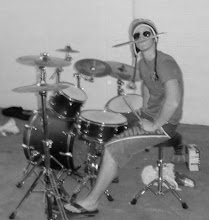Some original issues I had with text and image, that were noted in my feedback sheet was that my research, and sketchbook in general jumped all over the place. Some items were in place in random places and it wasn’t very coherent. This made it difficult for the development and theory behind my idea to be seen. Looking back at the sketchbooks, I can see these issues surfacing. For example, on some pages, I have done sketches and illustrations based on the work I was doing in that moment, with no supporting work or reason for it. While this way of recording information would work and would show my thought processes with appropriate annotation, my sketchbook is devoid of such information, making a lot of the work just confusing and jarring to the flow of the sketchbook and, in turn, the development and theory behind the final outcome.

In relation to this, in the following project I used a folder format so that I could explore avenues and ideas as they came along and then arrange them in to a flowing order as I handed it in. I then returned to the sketchbook format for the following flash project and found it a lot easier to work in. I found that I could record information effectively If I simply annotated and showed my thought processes as I went a long. I felt a lot more confident about the flash sketchbook than I did the text and image.
One aspect of text and image which I feel I should re-explore was some ways of forming inspiration and creating a visual library. This is most obvious in the drift project. I researched a method of recording inspiration and ideas through the use a ‘one illustration/group of text/lyric/haiku/image per page’ technique. I filled this sketchbook as I walked through, and with materials from a drift through Brighton. When the sketchbook was full I was left with a plethora of ideas, records of the way I was feeling at the time, illustrations and general visual material which I could simply pick and choose elements from in order to create an illustration.

I enjoyed this method of recording inspiration. I felt I was able to produce a highly informed and truly reflective piece of illustration from the sketchbook, and I also felt that the sketchbook itself was a great record of my experience through the drift, while also being an enjoyable piece of work to produce, helping me to hone my skills based around interpretation ideas and creating illustrations from them.
Another problem in text and image which was highlighted was that ideas that were incorporated into the final outcome were done so without much thought or reasoning. I believe this is a combination of running low on time and lacking the ability to include my thought processes that led me to the outcomes, and also me wanting to include so many elements in to my final book that a lot of them were there seemingly without any back up. One aspect that stands out in this respect was the inclusion of the concept of the book itself. It was based on lyrics and the meaning behind these lyrics. As the concept of the book was based on these lyrics, I also included elements from the design of the album the lyrics were form in to the design. However the inclusion of these elements were quite last minute.

In future project I focused on developing a final idea and improving and experimenting with fewer elements, while underpinning all of these elements with theory and research. I feel that the change was made as the outcome for text and image was quite a personal affair, however future projects were intended to be viewed and understood by an audience, also during this time my contextual knowledge and understanding and improving.


Text and Image gave me a lot of opportunity to experiment with new ways of doing things and also offered me feedback in how to improve my methods of working. Each one I feel I took on board and after re visiting it I have also been able to give myself action plans to include my current working.


